What is a Hazy IPA?
If you’ve been following craft beer trends for a while, you’ve likely noticed that hazy IPA has found a stronghold. What started out as a niche drink has turned into a mainstream brew.
Written by CraftJack | Updated | 6 min read
Interesting Tools
- Beer BrüMate Hopsulator
- Brewing Northern Brewer Beer Making Kit
- Spirit Crystal Whiskey Glasses
- Wine Wine Decanter/Aerator
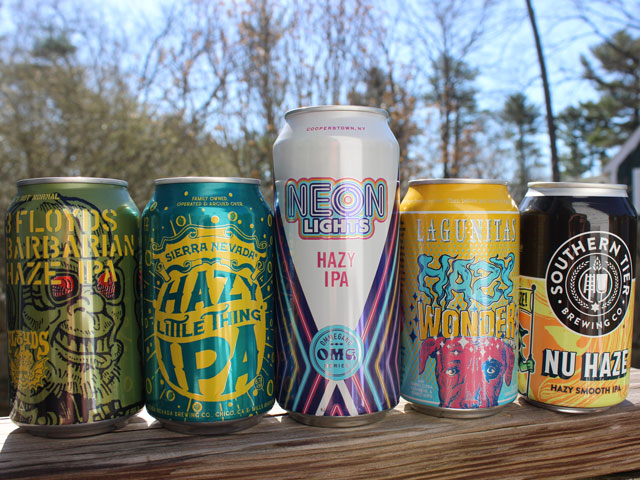
So what’s the reason behind the hazy IPA’s newfound popularity? Well, it turns out that there’s a lot to love about them. Namely that if you already like Indian pale ale, chances are you love the hazy version too. But even those who normally take a pass on IPAs find themselves drawn to this juice-like, cloudy beer.
Whether you’re a hazy IPA old hat or a newbie, you may be wondering what exactly makes this beer what it is. Keep reading to learn more about the beer that has taken the industry by storm.
Not the type of beer you want to shotgun.
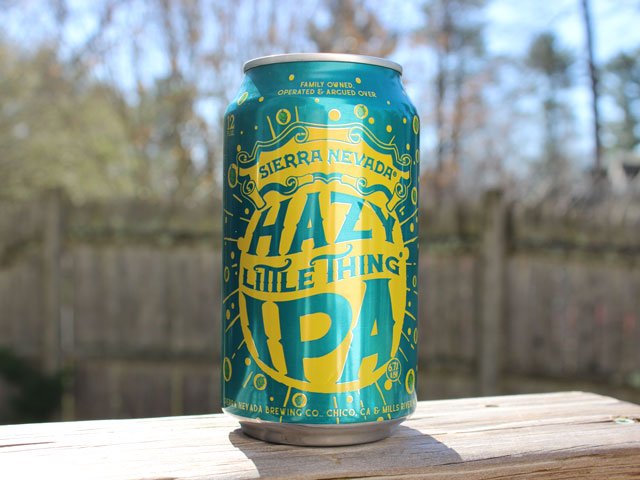
What Is a Hazy IPA?
If you’ve never had one before, you’re probably wondering just what the heck a Hazy IPA is anyway. For lack of a better description, they’re, well, hazy. Cloudiness is the first thing you notice about them. Pick one up, and unlike other beer types (like light-bodied pilsners), you can’t see through them.
We’ll get to what causes this cloudiness shortly, but first, there are some other things to know about hazy IPAs--like the fact that they have various names. You may hear this beverage referred to as New England IPA, juicy IPA, East Coast IPA, or unfiltered IPA. Don’t be confused if you hear these terms used interchangeably; they’re all the same thing.
Whatever name you use, the distinguishing features of a hazy IPA go beyond its haziness. Like all other IPAs, they’ve got lots of hops. But some careful brewing and less filtering deliver a beer that’s lower on the bitterness scale than other IPAs. You get a mouthfeel that’s creamier or fuller than regular IPAs and a fruity hop character.
This fruity hop character is the reason lots of people describe hazy IPAs as “juicy” or “citrus-like.” A just-poured glass is reminiscent of fresh-squeezed orange juice, and many people compare this beer type to their favorite morning beverage. And thanks to the fruity hops, hazy IPAs are pretty easy to drink.
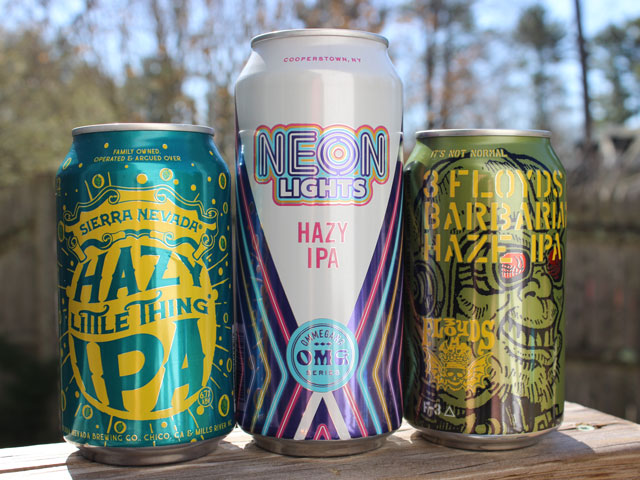
Best Hazy IPAs
- Adroit Theory Evangelion XVII [Tabris](Ghost 946)
- Bell's Brewery Official
- Greater Good Brewing GG Vibes
- Ommegang Neon Rainbows
- Sierra Nevada Hazy Little Thing
- The Alchemist Heady Topper
- Widowmaker Brewing Blue Comet
Brewers who make great Hazy IPAs
- Bell's Brewery
- Bissell Brothers
- Fidens Brewing
- Firestone Walker
- Other Half Brewing
- Rogue Brewing
- The Alchemist Brewery
- Tree House Brewing Company
Hazy vs. Regular IPA
If you know anything about beer, you probably already know that IPAs came from 19th-century England. This style of pale ale is all about enhancing hop flavors and aromas. IPAs are meant to be hop-forward, which means that the bitterness and fruity flavors of the hops are more noticeable than other flavor elements.
Hops are what distinguish hazy and regular IPAs. Both types use plenty of hops, but they use them in different ways and at different points in the brewing process. Traditional IPA usually adds these hops during the boil, which is what allows the more bitter flavor to come through.
On the other hand, hazy IPAs add the hops at the end of the boil, afterward, or during fermentation (if the hops are added during fermentation, it's known as dry-hopping). Adding the hops at the end is what allows a different flavor profile to come through--one of florals, citruses, and tropical fruits. This process also gets you a much less bitter beer.
If you're at all familiar with the craft beer scene, you probably know that IPAs are quite divisive. Especially when it comes to extra hoppy versions like double IPA, you either love them, or you hate them. But most people are more than happy to sit down with a hazy IPA, whether they fall on the IPA love/hate spectrum.
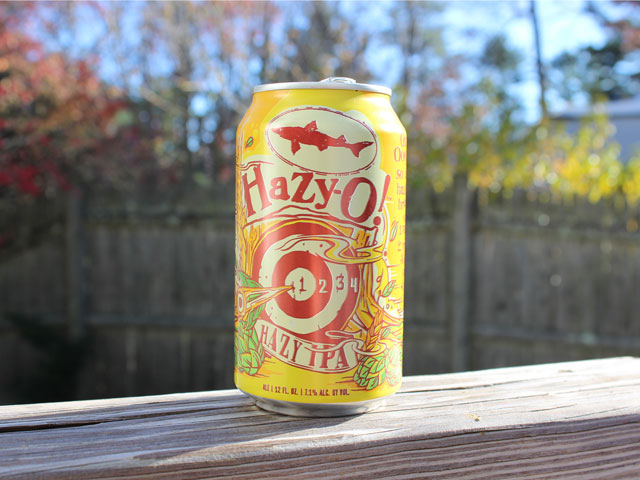
Taste
What makes hazy IPAs so interesting is how much the taste can vary. Like we mentioned above, most people describe them as juicy, though others would use the word “fruity” to talk about hazy IPAs.
Indeed, the fruit flavors are intense, but brewers don’t add any fruit or juice to achieve these intense flavor profiles. Instead, they’re a result of the hops used in the brewing process. Some common flavors are orange, citrus, mango, and passionfruit. You can also find flavors like grapefruit and tangerine.
What Makes it Hazy
Traditionally, the haze was undesirable. Brewers who saw hazy batches of beer knew that their batch was likely infected.
However, things changed in the early 2000s when brewers in the North-Eastern part of the United States began to experiment with creating less bitter IPAs. A Vermont brewery was the first to release an iteration of modern-day hazy beer, which is one of the reasons they’re called New England IPAs.
Let’s talk a little bit about what makes this style hazy.
Filtration (or Lack Thereof)
The primary reason that hazy IPAs are cloudy has to do with filtration. Hazy IPAs are unfiltered, so lots of particulate matter remains, creating the cloudy effect. (Not filtering the beer also helps the delicate aromas and flavors stay behind.)
Dry Hopping
We already mentioned dry hopping, which is what gives hazy IPAs their delicious flavor profiles. However, dry hopping also contributes to the haze, as it leaves behind plenty of hop oils and particulates.
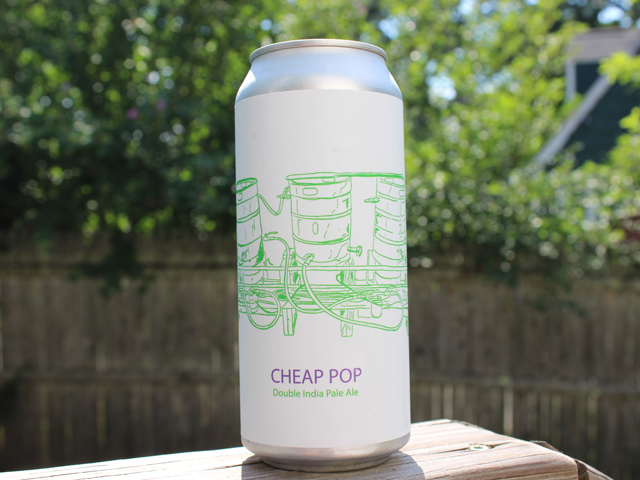
Yeast Strains
When making a traditional IPA, most brewers use yeast strains that drop out, which creates a clearer beer. But when it comes to hazy IPAs, brewers use special yeast strains to produce fruity esters. Not only do they deliver plenty of flavor, but they also leave yeast sediment, which produces even more haze.
More Grains
But some brewers are not content with the above processes, and they add some other things to bring out the juicy haze: grains.
Love the creamy, smooth mouthfeel that’s characteristic of hazy IPAs? You can thank grains. In standard IPAs, barley malts are commonly used. But when it comes to hazy IPAs, brewers opt for wheat and oats instead.
How Hoppy Are They?
The answer to how hoppy hazy IPAs are is rather subjective because everyone experiences hops differently.
You can look at an individual beer’s International Bitterness Units (IBU) measurement to get an idea. But although IBUs can tell you how hoppy a beer is, the balance of hops and sweetness can affect how different people perceive them. For example, even a hazy and a standard IPA with more or less the same IBUs may read quite differently in terms of bitterness.
Types of Hops in a Hazy IPA
There’s no one hops profile for hazy IPA. Instead, the types of hops used can vary significantly from brewer to brewer, depending on what flavors they want to bring out. Here are some examples of hops you can find in hazy IPA.
Aroma hops:
Bittering hops:
- Apollo
- Magnum
- Warrior
- Summit
Dual-purpose hops:
- Columbus
- Citra
To get an idea of what hops might be combined, let’s take a look at Firestone Walker, who recently came out with its first hazy IPA. They describe this brew as being loaded with “an imaginative array of tropical hop flavors,” including Cashmere, Mandarina, El Dorado, Idaho 7, Azacca, and Mosaic hops.
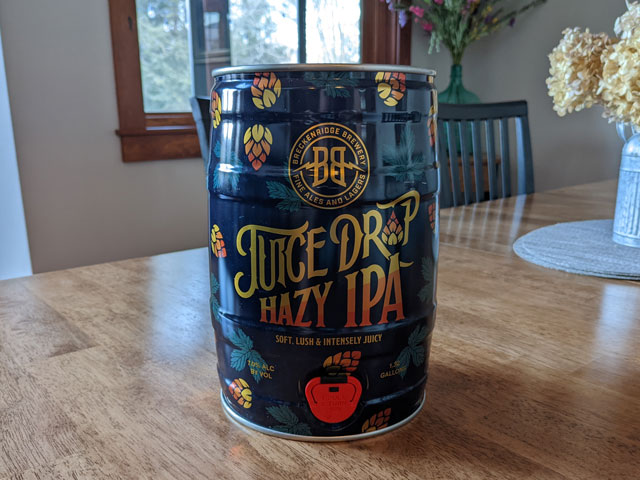
How Boozy Are Hazy IPAs?
The alcohol by volume content of hazy IPAs largely depends on the brewer. Contrary to what you might think, despite having a considerably bigger flavor profile, hazy IPAs don’t inherently have a higher alcohol content than regular IPAs.
Instead, their ABV content runs the gamut. You can find hazy IPAs from 4% ABV all the way up to 9% ABV, which is another thing that makes them so desirable. Whether you’re looking for something that’s easy to drink with your buddies or you want something that packs more of a punch, there’s a hazy IPA that fits the bill.
Nutrition
Now it’s time for everybody’s least favorite when talking about beer: nutrition.
Hazy IPA is just like any other craft beer in that the bulk of its calories come from carbs and alcohol. Carb and alcohol content can vary pretty widely from recipe to recipe because of mashing. Mashing is when brewers mix grains and hot water. This pulls out sugars, which yeast then feasts on throughout fermentation, and the mashing process is how we get alcohol.
However, the yeast is unable to break down all the sugars created during mashing, and these sugars become the carbs that the beer has when it reaches your stomach. How many carbs the beer has depends on whether the brewer uses grains that ferment well--in other words, have they used yeast that will break down all the sugars?
As you can imagine, the result looks different from beer to beer. If you’re concerned about calories, some manufacturers are working on a lower-cal beer of around 100 calories. But in general, most hazy IPAs that you’ll find will have anywhere from about 150 to 260 calories--the price to pay for savoring one of these delicious brews.
Final Thoughts
No matter what your feelings about IPAs, there’s plenty to love about hazy IPA. With nearly endless flavors and enchanting hop aromas, there’s a lot to explore--and something for everyone. Even if you prefer a regular IPA, you may just be surprised by all that hazy IPAs have to offer.
